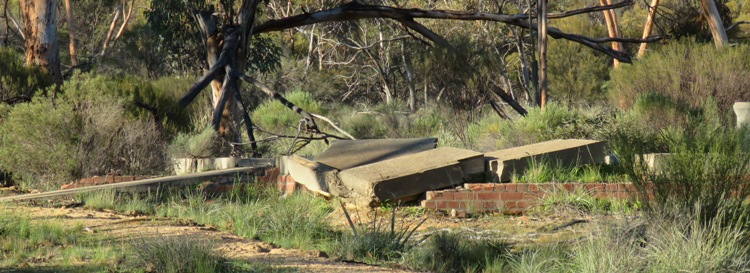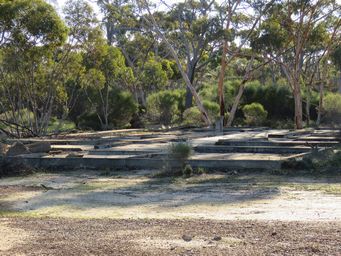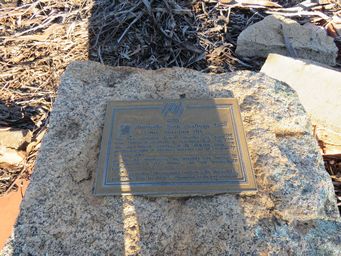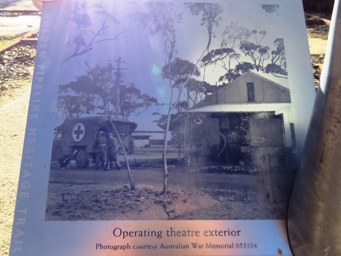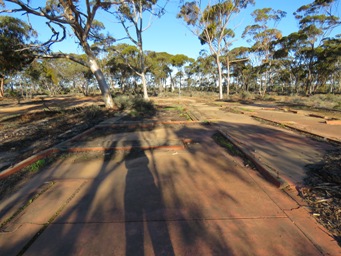Australia So Much to See

Muddied Memories
'Mud, mud and more mud - that is my main memory of Merredin. Clomping around in knee high gum boots .
. . When the day's work was done there was always the hazardous trip to the mess for the evening meal. Sister always delegated
a patient to accompany me to the gate of the quarters, armed with a hurricane lamp, not only because it was pitch black outside, but
there was also slit trenches half filled with water to be negotiated.'
Private Lola Humphrys
Being at the base of the rock meant that this flat area became muddy after rain.
Merredin was chosen due to the availability of water and access by rail, and was considered too far from the coast for enemy fighter planes to fly without a fuel stop.
It had an independent water supply from the railway dam which would allow it to continue operating even if the enemy destroyed the Goldfields Water Supply pipeline.
The pipeline was used for the Hospital, and the tank and pipeline was a back-up source. Water from the railway dam was pumped to a tank at the top of Merredin Peak from where it gravitated down a pipeline to the hospital.
A few bricks remain from the foundations of the pipeline down to the hospital site.
Merredin Military Hospital site was at the base of Merredin Peak, where water tanks were built on the rock for water storage. The army hospital, brought from the middle east was erected here during World War 2, was used for less than a year.
This consisted
mainly of 24 tents each capable of holding 20 patients, hastily erected here in the latter half of 1942 when armed forces returned
from overseas to protect Australia, at a time when Australia feared a Japanese invasion.
Australia 1988-1988
Merredin Peak Heritage Trail
Army Hospital Site
The First Australian General Hospital was relocated from
Tobruk to Merredin in December 1942. The new site was chosen because of its distance from the anticipated point of Japanese
invasion and the availability of fresh water.
As the war progressed, the hospital was moved to Bougainville in New Guinea, and
only foundations remain.
An Australian Bicentennial project with financial assistance from State & Commonwealth governments.
By November 1942, the hospital had 5 Medical Orderlies, 34 Australian Army Nursing Service nurses, 11 Voluntary Aid Detachment/Australian Army Medical Service personnel, and 143 other ranks.
The 264 bed tent hospital received its first patients 14th November
1942 when an Ambulance train arrive with 148 patients. By January 1943, the hospital had 267 admissions and permanent buildings
were slowly replacing the tents.
The hospital was shifted to the war zone in New Guinea in August 1943, from where it was returned to Australia in 1945 at the conclusion
of the war.
Photos of the original buildings can be seen on the Australian War Museum archives.
Concrete pads from the structural buildings are all that can be seen now. These were from the kitchen, latrines, and operating theatre.
Take the 2.4 kilometre loop drive or walk trail, where signage at each point shows outlines what was once there.
